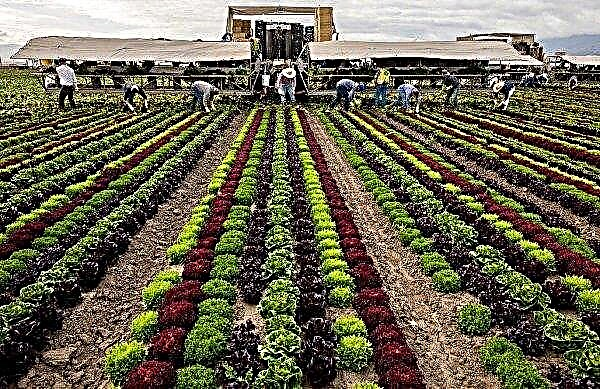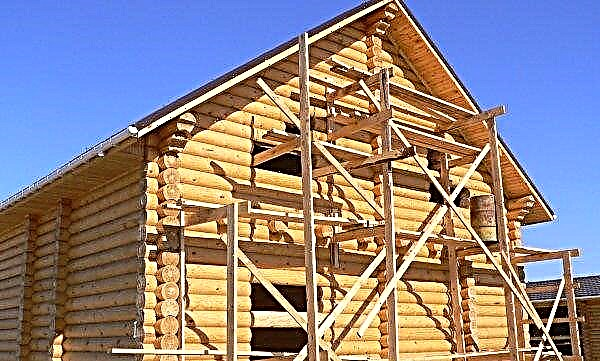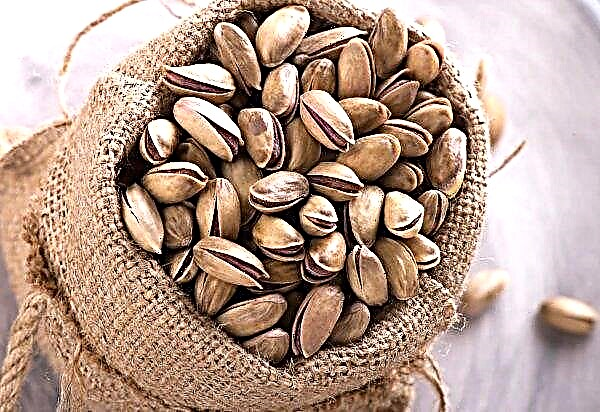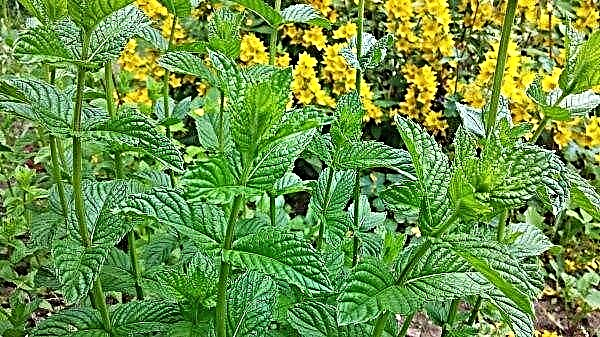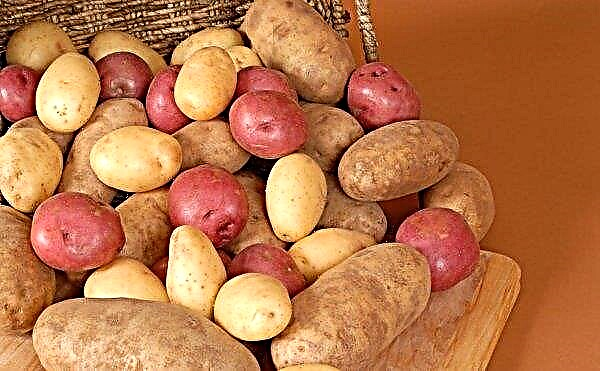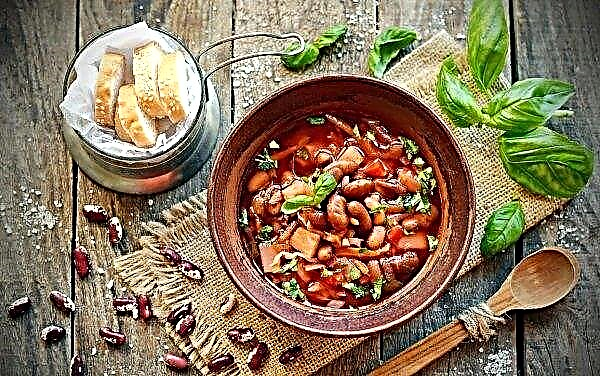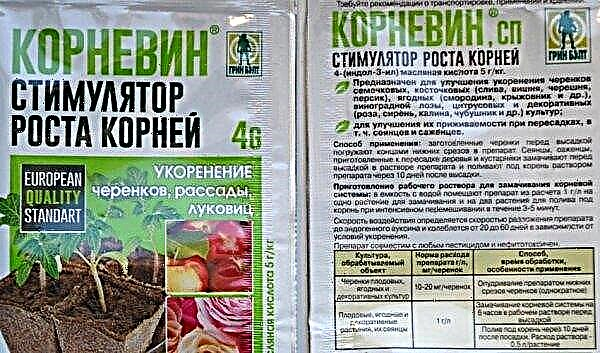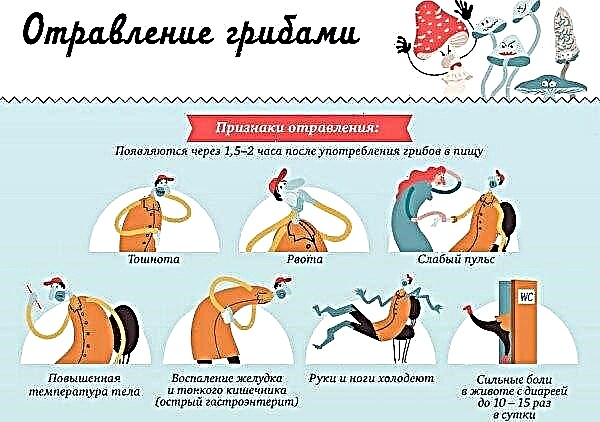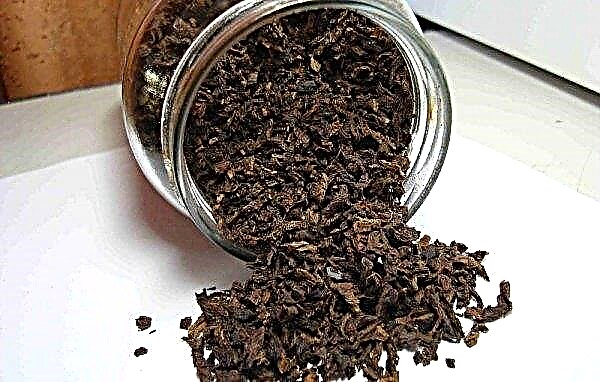Perhaps, having heard the phrase “bow in braids,” many will remember how they came to the village as a child, and onion clusters hung in the house. This method of storing vegetables has long been considered the best and most practical. And although braiding onions is longer than just pouring them into a container, you can always have unspoiled and high-quality bulbs on hand. How to make a braid from bulbs and what are its advantages - we will consider in this article.
Why should you store onions in braids
Onions (especially onions) are consumed by most people throughout the year. It can be pickled, added to the first and second courses, made salads, used as a filling or medicine for the common cold. This is the vegetable that should always be at hand, so it is important to take care of its safety for the winter.
There are several ways to store onions:
- freezing (chopped onions and frozen in bags);
- in mesh bags (the vegetable is put in bags and piled on top of each other);
- in nylon stockings (this "Soviet", not quite aesthetic method also paid off, because stockings perfectly let air through);
- in a different container (wooden boxes, cardboard boxes, baskets, fabric bags).

Using it, you provide the following conditions:
- Air circulation. Bulbs evenly "breathe", which serves as a preventive measure against rotting and other painful processes.
- Preservation of taste. Bulbs do not absorb the smell of containers and do not lose their aromatic properties.
- Constant control over the state of the plant. You can notice perishable heads in time and remove them. Due to the fact that the bulbs almost do not touch, the diseases are not transferred to neighboring heads.
- Preservation from rodents. Bulbous braids are suspended from the ceiling, and this limits the access of pests to them (when stored in a cellar or basement).
- Additional decor. Braided bulbs are not only comfortable, but also beautiful. They can become a successful addition to the interior in an eco-style.
Did you know? Onion is the only vegetable crop that has worldwide application. The cuisine of any people in the world cannot do without this vegetable. Crops of more than 200 types of onions are three times higher than wheat crops, and it is a national product in 175 countries of the world.
Preparing the bow for weaving
In order for the braid to retain the properties of the product and its aesthetic appearance, it is necessary to carefully approach the question of selecting bulbs. Having collected the amount of the crop that you want to "weave", you should start sorting it. For the braid, even bulbs of the same size are selected, without defects, with a dense skin. After this, the roots are trimmed (optional), the excess soil is shaken off the fruit and the upper dirty husk is removed. Then the plant is sent to dry. To do this, it is laid out in the sun, preferably under a canopy, and dried for 3–7 days. Drying times are individual and depend on temperature and humidity, therefore, it is best to determine the readiness of onions for weaving according to tops. If the feathers are not raw and have already sunk, you can start the process, such tops are elastic, it does not tear and does not break.
Then the plant is sent to dry. To do this, it is laid out in the sun, preferably under a canopy, and dried for 3–7 days. Drying times are individual and depend on temperature and humidity, therefore, it is best to determine the readiness of onions for weaving according to tops. If the feathers are not raw and have already sunk, you can start the process, such tops are elastic, it does not tear and does not break.
How to tie a bow into a braid using a rope
Since 1 onion usually weighs 80–100 g, and up to 30 heads are placed on a bundle, the weight of 1 onion braid can reach 3 kg. However, the tops of the vegetable will not withstand such a load, therefore, for weaving, you should take a strong rope, bandage or cord, which will be the basis for binding.
Option 1
The simplest and most common method is weaving a simple braid.
Important! The finished braid should be tight. Bulbs should not hang from the braid and hang out. The quality of the braid is checked by a uniform distance between all the heads (they should only slightly touch each other) and their proximity to the braid.
To execute it, you must adhere to the scheme:
- Choose the largest head with the longest stem.
- Measure the center of the rope and in this place tie the selected bulb so that it turns out 3 ends (1 from the tops and 2 from the rope).
- Further, from three ends weave a braid, at each step picking up one head of a new bulb.
- Weave heads tightly, positioning them as close to the rope as possible.
- Continue twisting, leaving the tail length sufficient for fastening.

Option 2
After the bulbs are dried and the most beautiful of them are selected, you can start weaving in the second way. Long feathers are not needed for it - they should be trimmed after drying and a tail of 10-15 cm long should be left. The advantage of this method is a strong garter, the braid does not fall apart and holds firmly. However, more time needs to be spent on such weaving.
We will analyze the methodology step by step:
- Take a strong rope, tie it with a ring and hang it on a hook for convenient weaving.
- In the lower center of the cord, make a knot with the tail of the largest bulb.
- Next, take one bulb, position it in the center and twist the tail with the rope from the inside to the right and left. If the tip of the ponytail remains, you need to twist it again to fix it.
- Turn the bunch over and do the same with the next head, and so on with everyone.
- String the bulbs to the top, leaving 15–20 cm of rope on top for tying.
Video: how to weave a bow into pigtails
Option 3
The third option is distinguished by the ability to weave a large number of heads into the braid. Such ligaments from onions at the exit have a weight of 10-30 kg. They are voluminous and beautiful, they attract the eyes of guests, they can be used to decorate rooms, kitchens, summer kitchens, verandas. This method differs from others in pair weaving heads. For him, you also need to prepare the bow for weaving and trim the feathers, leaving about 10 cm.
Important! So that the bulbous braid, woven in the third way, does not fall apart, use an assistant to weave, who will support the lower layers and control the laying of the bulbs.
Next, all the bulbs need to be tied in tails in pairs and perform further actions:
- Lay out the rope on a flat surface (earth, grass, table).
- Take 2 pairs of bulbs, fold them crosswise and place in the center of the rope. Tie a tight knot at both ends of the rope, thus fixing the bulbs and making a “ball” out of them.
- Next, take 2 of the same bulbous ligaments, fold them crosswise and fix again with a cord.
- Repeat the procedure, laying the bulbs in pairs to the very top, until there is a rope tail for fastening.
Video: how to weave a bow into braids
How to store onions in braids
The main condition for storing this vegetable crop is breathability. Fruits should always be fed with oxygen - this will protect them from debate and blackening. The next factor is dryness: humidity should not reach 70%, since it is harmful to onions, and it cannot be stored for long. Next, you need to consider the temperature regime. Experienced gardeners advise preserving the bulbs in a dry and cool place (0 ... + 16 ° C).
Did you know? AT In ancient times, onions were considered protection from the evil eye and disease. And to this day it is believed that the onion stored in the room absorbs the negative into itself. Magic is magic, but the fact of “cleansing” has a scientific explanation, because onions are “air cleaners” due to their high phytoncide content.
Since the places in which bulbous braids can be stored differ in storage conditions, we consider them in more detail:
- To save onions in a summer cottage, in a private house or in a manor, a storage place can be a canopy, a corridor, a cellar (only in the absence of high humidity), a utility shed, a veranda, a closet. In them, as a rule, the optimum temperature is maintained, but still it is necessary to ensure that the onion does not freeze.
- If this is not possible and the vegetable will be sent for storage to the apartment, then a suitable place would be a kitchen, closet, pantry or balcony. Do not be afraid that in a kitchen environment the onion will be at a higher temperature than indicated above. If you plan to quickly use all the prepared onions, then you can safely keep it even with such indicators.
Subject to all storage conditions, such onions will benefit you throughout the cold period. Weaving onion braids is a long tradition. Grandmothers taught to weave them to their granddaughters, and they passed knowledge to the next generation. From time immemorial, the onion spit served not only as a convenient way to store onions and decorate the interior, but also as a talisman - it was believed that it protects the house from uninvited guests. Therefore, let the braid made by your hands protect your family from illnesses and bring it prosperity.
From time immemorial, the onion spit served not only as a convenient way to store onions and decorate the interior, but also as a talisman - it was believed that it protects the house from uninvited guests. Therefore, let the braid made by your hands protect your family from illnesses and bring it prosperity.

